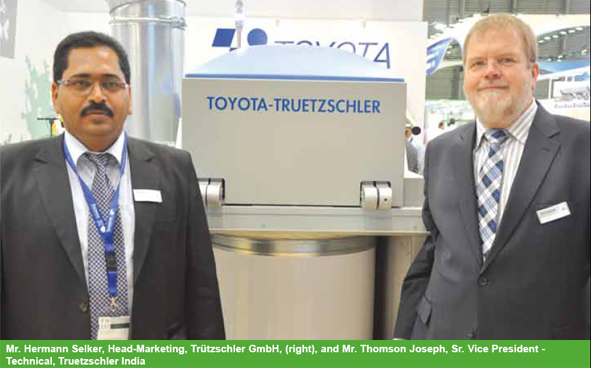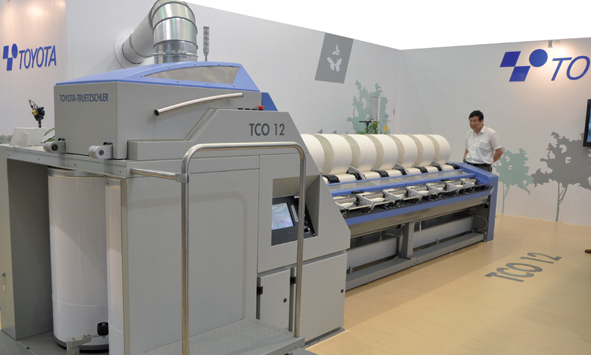 Toyota Industries Corporation (TICO) of Japan and Truetzschler GmbH & Co. KG of Germany have agreed to co-operate on developing, manufacturing and marketing combing machines.
Toyota Industries Corporation (TICO) of Japan and Truetzschler GmbH & Co. KG of Germany have agreed to co-operate on developing, manufacturing and marketing combing machines.
TICO, which is an origin company of Toyota as the world famous car manufacturer, has been building textile machinery since 1926, and has a decade of experience in the combing sector. Truetzschler is a specialist for draw frames in the short-staple range, and has been building spinning preparation machines since 1888. The extensive know-how of both companies is now flowing into the development of a new generation of combers.
The prototype of a new comber generation, the Toyota-Truetzschler TCO 12, was introduced at ITMA Asia 2012 in Shanghai.
Toyota’s experience in building weaving machinery with special servo motor technology is reflected in the comber. As with weaving machinery, there are also many elements here that require a reversal of rotation several hundred times per minute. In the past, this was solved with complex oil bath gears. This conventional technology has reached its limit of performance.
 Toyota uses individual motors to synchronously drive the combing elements on both sides. This minimises the torsion of the elements and the vibration of the machine. The significantly reduced combing condition variance of the 8 comb heads improves sliver quality. The performance potential of this machine by far exceeds the previous state-of-the-art.
Toyota uses individual motors to synchronously drive the combing elements on both sides. This minimises the torsion of the elements and the vibration of the machine. The significantly reduced combing condition variance of the 8 comb heads improves sliver quality. The performance potential of this machine by far exceeds the previous state-of-the-art.
Trützschler’s contribution to the project is a new head stock with draw box and can changer. This includes the experiences gained in building draw frames with individual drives, equipped with highly dynamic levelling. Disc Monitor, the latest draw frame quality sensor, has also been integrated. This permanent quality monitoring provides the data for automatic self-optimisation of the machine. Due to the individual drive technology of the combing elements, the piecing process, for instance, is automatically optimised. Furthermore, deviations in lap weight no longer present a problem, since the sliver count is permanently monitored and corrected when necessary.
This leap in technology was only made possible by simultaneously integrating the knowhow of Truetzschler and Toyota.